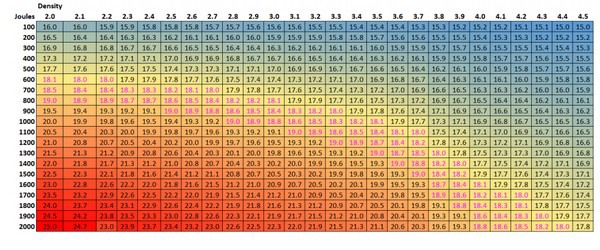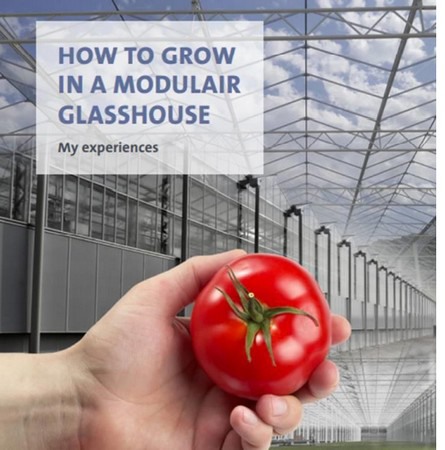One of the most difficult jobs for a grower is to determine the right 24-hour temperature for his crop. How much light do the plants receive today, and what temperature should I maintain? In this article, Godfrey Dol with Glasshouse Consulting, wants to provide more clarity into how we can play with these three parameters, in order to maintain plant vigor and maximize yield.

In the Netherlands, growers have largely standardized the planting density in a tomato crop. More light means a higher planting density. The Dutch climate is significantly restricted by sunlight in winter and therefore, growers start their crops at a low planting density in winter. The density is increased as light increases. But what about climates with high winter light? What planting density can be maintained at what temperature? How can the planting density be adjusted to maximize yield? What if the market demands products during times of the year when light is low?
Making an annual crop plan
With the table above I used my practical experience to match sunlight, density, and temperature for truss and beef tomatoes. It provides a handy aid for several decisions a grower must make. The table indicates a balance between temperature, sunlight, and density, in order to maintain a strong enough plant. Based on historic light levels, a determination can be made as to what planting density can be maintained. For instance, if a crop is grown through the winter, and the light levels around the shortest day averages 800 Joules, at an optimal average 24-hour temperature of 18 degrees Celsius, a planting density of 3.0 can be maintained. In some climates, the summer temperature is so high that the average 24-hour temperature exceeds 22 degrees for extended periods of time. The table shows that even if the lights reach 2,000 joules, the density should be brought back to 3.1 plants per square meter. In this way, the table helps to make an annual crop plan.
The table can also be used to ascertain what 24-hour temperature should be maintained based on how many joules the plant received during the day. For instance, if the light sum was 1,300 joules on a partly sunny day in spring, and the plant density is 3.8, the 24-hour temperature for that day should be 18.0 degrees Celsius. If the temperature was higher, the grower risks losing strength in the plant, and the head width will be reduced. Of course, the table is only a guideline, in this case for truss and beef tomatoes. For snacking and grape tomatoes, the same table can be used, but 2 degrees must be added to the temperature. Ultimately, the stem thickness will tell you if the temperature has been too high, but the table provides a useful guide.
It is also important to mention that at 24-hour temperatures of more than 19 degrees Celsius, the plant uses excess assimilates for transpiration, at the expense of yield. If, either the outside climate or the glasshouse technology, allows the grower to maintain an average 24-hour temperature of 18-19 degrees Celsius, the highest yields will be achieved. The purple color of the temperature in the table indicates this “sweet spot”, and the plant density plan should be planned in this range.
Young Plants
Young plants require less light. In warmer climates, the grower can make use of this aspect by blocking out light to reduce heat in the glasshouse. In conventional greenhouses, whitewash is preferred as this keeps the heat out of the glasshouse. In semi-closed glasshouses, the Par-Perfect system works better.
How much light can we shade away? The rule of thumb is that the plant needs 200 Joules plus 200 joules for every truss. Since the plant usually carries 8 trusses this means 8x200 plus 200 equals 1800 Joules as a maximum. The table below integrates the plant density into this equation.

For instance, if a plant has four trusses, and the plant density is 3.0, the plant needs 750 Joules. If the light sum for the day is 1,800 joules, the light can be reduced to 750 joules by shading away radiation, without a yield penalty.
Summary
Understanding the relationship between light, temperature and plant density is a vital part of optimizing yield. An annual crop plan must include the plant density. The tables provided in this article give an indication how the planting density, temperature and light relate to each other.
 If you found this article interesting, more can be read in the upcoming book; “How to Grow in a ModulAir Glasshouse”. It has been sponsored by Van Der Hoeven glasshouse builders and is full of tips on how to maximize yield in a semi-closed glasshouse.
If you found this article interesting, more can be read in the upcoming book; “How to Grow in a ModulAir Glasshouse”. It has been sponsored by Van Der Hoeven glasshouse builders and is full of tips on how to maximize yield in a semi-closed glasshouse.
For more information:
Glasshouse Consultancy
Godfrey Dol
godfrey@glasshouse-consultancy.com
+81 80 700 94 006
www.glasshouse-consultancy.com
